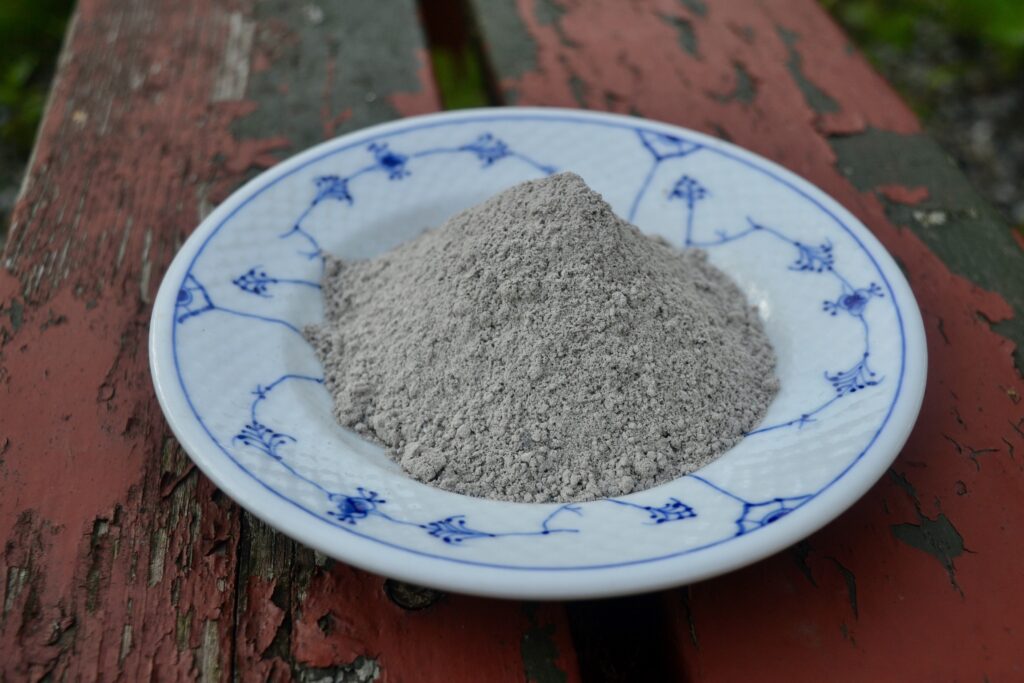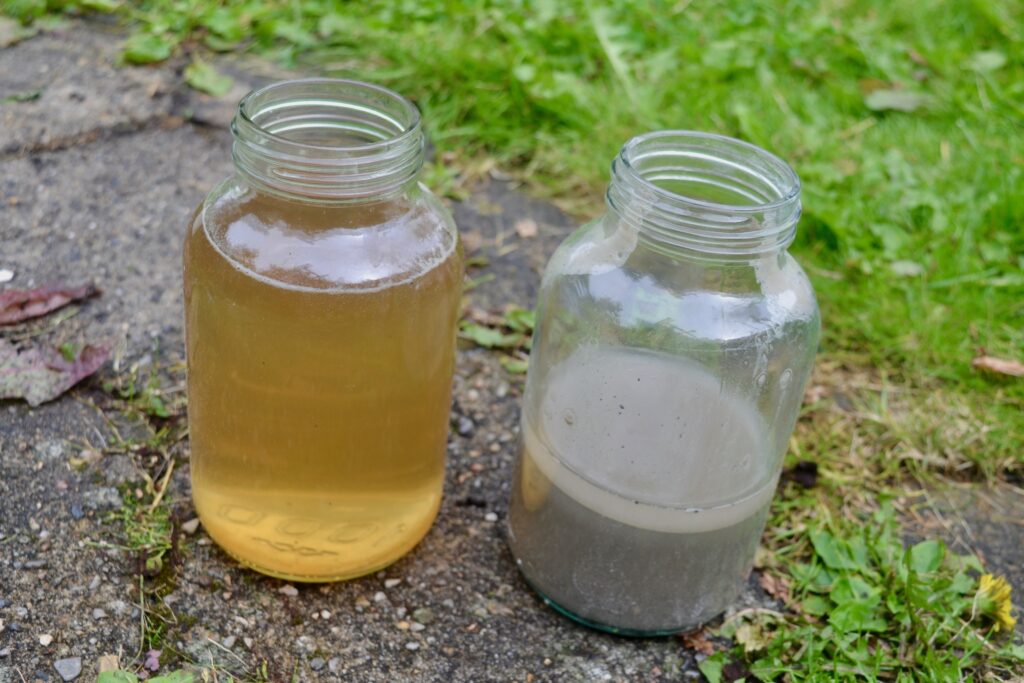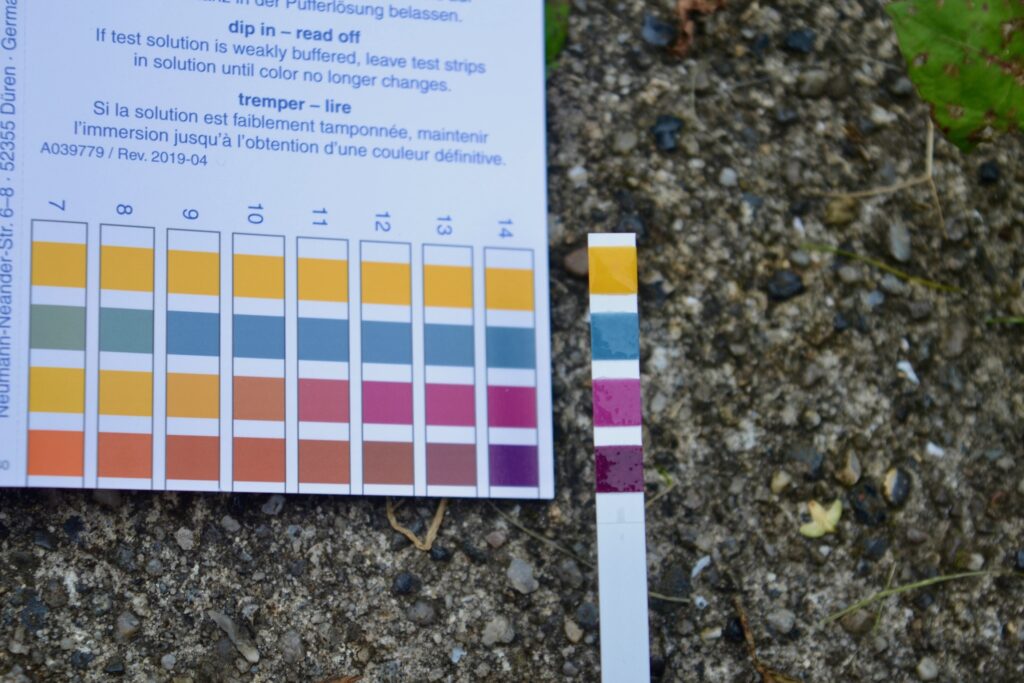pH is very important when using natural dyes, and people have always used available resources to control pH. The easily available bases in the past – and even the deep past – are urine and wood ash.
Urine is pH neutral when fresh, but forms ammonia when stored, causing the pH to rise. There is absolutely no doubt that the use of stale urine is historically relevant in dyeing – however, the decision to use this process or not falls to the individual dyer!

Wood ash is the other option. Making lye is very simple: pour boiling water over ash, let it steep so the ash settles to the bottom, then use the liquid. It has now turned into lye (a strong base). The strength of the lye depends on the amounts of ash and water used. A rather small amount of ash will produce surprisingly strong lye.
Here, I’ve put 100 g of ash in a 1 L bottle and added boiling water until the bottle was full. The ash is very fine, and all the particles float around:

But after a while, the particles settle, and the lye can be poured off carefully. Here, I’ve poured the lye into another bottle and added water to 1 L. The strong lye is yellow:

And how strong is the lye? Measuring with pH strips look like this:

The strips are showing the highest pH they can, 14. This fits with my practical experience of lye making. The lye is very strong and needs to be diluted a lot for most purposes. Or, a weaker lye could be made with a smaller amount of ash.
So what are the uses of lye? My old books seem to agree that urine was used for indigo dyeing according to old Danish recipes. Lye is mentioned for scouring linen, a thorough cleaning. Moving away from dyeing only, lye was also used in soapmaking. In addition to that, lye can be used for any process that needs base. Lye is a natural substance, but attention should be paid to its strength! It is just as corrosive as a store bought drain cleaner, so wear safety goggles and gloves!
BUT WE NEED A BIT OF CHEMICAL EXPLANATION
The only question remaining is a chemical one, namely: why is lye such a strong base? The first times I tried making lye, I was truly surprised of the potency of even a small amount of ash. The reason is that trees take up sodium and potassium salts from the soil when they grow. When the wood is burned, the salts become oxides (burning is the reaction with oxygen, oxidation). When water is added, the oxides turn into the hydroxides: potassium hydroxide and sodium hydroxide (KOH and NaOH). The latter is available in pure form as caustic soda or drain cleaner.

Astrids butik is my shop for all the products connected to Midgaards Have – dyes, yarn for dyeing, seeds – and all the products connected to my other project, Retrofutura plus a growing range of other yarns and knitting design.